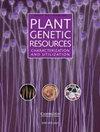Genetic stability of cryopreserved ornamental Lilium germplasm
IF 0.7
4区 生物学
Q3 PLANT SCIENCES
Plant Genetic Resources: Characterization and Utilization
Pub Date : 2022-05-04
DOI:10.1017/s147926212200003x
引用次数: 1
Abstract
The genus Lilium contains a number of ornamental crop species, which are commercially important in many countries. As they are vegetatively propagated, maintaining genetic stability is essential for their efficient conservation. In this study, we investigated the genetic stability of regenerated plants of three cultivars (L. bolanderi ‘Lenora’, L. bolanderi ‘Mount Duckling’ and L. bolanderi ‘Mount Dragon’) and one variety (L. callosum var. flavum) after cryopreservation, compared with fresh (donor) and non-cryopreserved plants using morphological traits and ISSR markers. No differences in morphological parameters including flower, stigma and pollen colour, floral spots, floral direction or polymorphic bands were observed between control (fresh and non-cryopreserved) and cryopreserved plantlets. In addition, based on the resulting UPGMA dendrogram, the four taxa were divided into different clusters. All cryopreserved, non-cryopreserved and fresh plants in each group could be grouped together in a single cluster with more than 97 or 100% similarity. The results suggest a very low level or the absence of genetic variation in terms of morphological and genetic stability among the plants regenerated after cryopreservation.观赏百合超低温种质的遗传稳定性
百合属包含许多观赏作物品种,在许多国家具有重要的商业价值。由于它们是无性繁殖的,因此保持遗传稳定性对它们的有效保护至关重要。本研究利用形态特征和ISSR标记,对3个品种(L. bolanderi ' Lenora '、L. bolanderi ' Mount Duckling '和L. bolanderi ' Mount Dragon ')和1个品种(L. callosum var. flavum)的再生植株与新鲜(供体)和非冷冻植株进行了低温保存后的遗传稳定性比较。在花、柱头和花粉颜色、花斑、花方向和多态带等形态学参数上,对照(新鲜和非冷冻保存)和冷冻保存的植株没有差异。此外,根据UPGMA树状图,将4个类群划分为不同的聚类。每组中所有低温保存、非低温保存和新鲜植物均可归为一个簇,相似性大于97%或100%。结果表明,低温保存后再生植株在形态和遗传稳定性方面的遗传变异水平很低或没有遗传变异。
本文章由计算机程序翻译,如有差异,请以英文原文为准。
求助全文
约1分钟内获得全文
求助全文
来源期刊

Plant Genetic Resources: Characterization and Utilization
Agricultural and Biological Sciences-Agronomy and Crop Science
CiteScore
2.80
自引率
0.00%
发文量
29
审稿时长
>12 weeks
期刊介绍:
Plant Genetic Resources is an international journal which provides a forum for describing the application of novel genomic technologies, as well as their integration with established techniques, towards the understanding of the genetic variation captured in both in situ and ex situ collections of crop and non-crop plants; and for the airing of wider issues relevant to plant germplasm conservation and utilisation. We particularly welcome multi-disciplinary approaches that incorporate both a technical and a socio-economic focus. Technical aspects can cover developments in technologies of potential or demonstrated relevance to the analysis of variation and diversity at the phenotypic and genotypic levels.
 求助内容:
求助内容: 应助结果提醒方式:
应助结果提醒方式:


